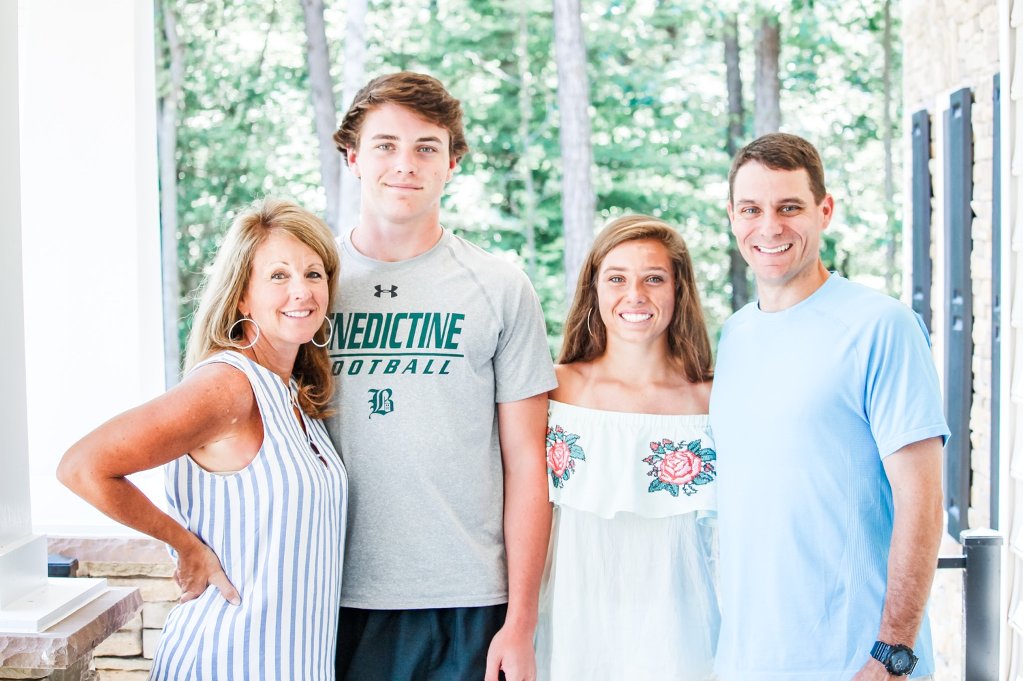Guest blog by Kerri Rhodes

“If you think it’s hard to watch, imagine how hard it is to live.”
– Taylor Rhodes Jr.
On June 29, 2019, I felt my heart stop and shatter into a million little pieces. My beautiful boy was gone from an accidental overdose from heroin laced with fentanyl. He was 20 years old and had only been out of a collegiate therapeutic recovery program for a month. Taylor’s battle — our family’s battle — with substance use disorder started at the end of his freshman year in high school. Taylor, a gifted student-athlete, injured his shoulder playing tennis, and the resulting surgery and the way his postoperative pain was managed changed the course of his life and ours. He would later tell us that the Percocet he was prescribed after his surgery “made his brain feel normal” for the first time. It was the match that lit the spark that hijacked his brain and led to his battle with addiction. His brain chased that feeling to his death.
The treatment of SUD and mental health leave a lot to be desired in this country. The gaps are wide and it is hard to find good, competent, comprehensive care. Each of those gaps represents the potential for relapse and death and with fentanyl in the equations there is no room for error. I have been a mental health clinician for 28 years. However, neither my clinical experience nor my maternal instincts prepared me for our battle with substance use disorder.
We worked hard to get Taylor the best therapy and the best treatment that insurance and money could buy. We found that the resources for young people and their families struggling with substance use disorder were particularly siloed and fragmented. We encountered programs and professionals who were just not competent or winging it. The standards of care for addiction are still being developed and established. We can no longer accept just winging it — too many lives depend on it.
Ironically, six years after Taylor’s shoulder surgery, our daughter, Blair, suffered the very same shoulder injury and needed the same surgery. What we quickly realized was nothing had changed. She was going to be given the same Percocet to manage post-surgical pain that Taylor was prescribed. We REFUSED opioids, and Blair received a non-opioid option that slowed the release of her numbing block. Her block lasted about six days and she had little pain and managed that with acetaminophen. We had to fight for her to get an alternative. Our story is all too common and so many of us do what doctors tell us to do no questions asked.
I wish I had refused the opioids that were given to Taylor to manage his post-surgical shoulder pain and not expose his developing brain to one of the most addictive drugs on the planet. I wish I had asked questions and been educated about the risks that opioids pose. It is unconscionable to continue to play Russian roulette with people’s brains. We do not know who this disease will grab until it already has them. Once it has you, you are immediately in a fight for your life.
Many doctors, oral surgeons and dentists still prescribe opioids for postoperative pain management, providing little assessment or education around the risk factors or presenting that there are non-opioid alternatives. When I asked Blair’s surgeons why doctors were still routinely prescribing the most addictive drug on the planet when there are safer options, particularly given the vastly different outcomes from Taylor’s and Blair’s surgeries? The response from the surgeon was: COST. The annual cost of addiction in this country is $1.45 trillion in economic loss and societal harm. The cost of the non-opioid pain management Blair received was $180, which was more expensive than the prescription of opioids Taylor received. However, the $180 spent on Blair’s post-operative pain management paled in comparison to the cost of Taylor’s resulting battle with addiction. There is no price tag for losing a loved one.
The healthcare industry needs to do better, but until they do, we as consumers need to demand better for ourselves and our loved ones. No one should have to fight for non-opioid pain management options. They should be an integral part of treatment protocols for post-operative pain management.
I have a choice in how I move forward after losing Taylor, and I choose to find ways to be part of changing the systems that could have helped him along the way. It is important for parents to recognize the signs, the risk factors and the challenges that come with substance use disorder. This disease does not happen to other people’s children. It is not about bad parenting, moral failings, or bad choices. Substance Use Disorder is a brain disease. The healthcare industry needs to stop contributing to this epidemic. Until our own healthcare industry becomes more informed, it is critically important to be aware of non-opioid pain management options and reduce unnecessary opioid exposure. In many cases, opioids are not needed.
The more we talk about addiction and the beautiful people who struggle with this disease, the more light we bring to the darkness. As a result, the better our chances are of erasing the stigma and ignorance that still surrounds it, and maybe we save a family what we live with each and every day. No one Chooses Addiction.
